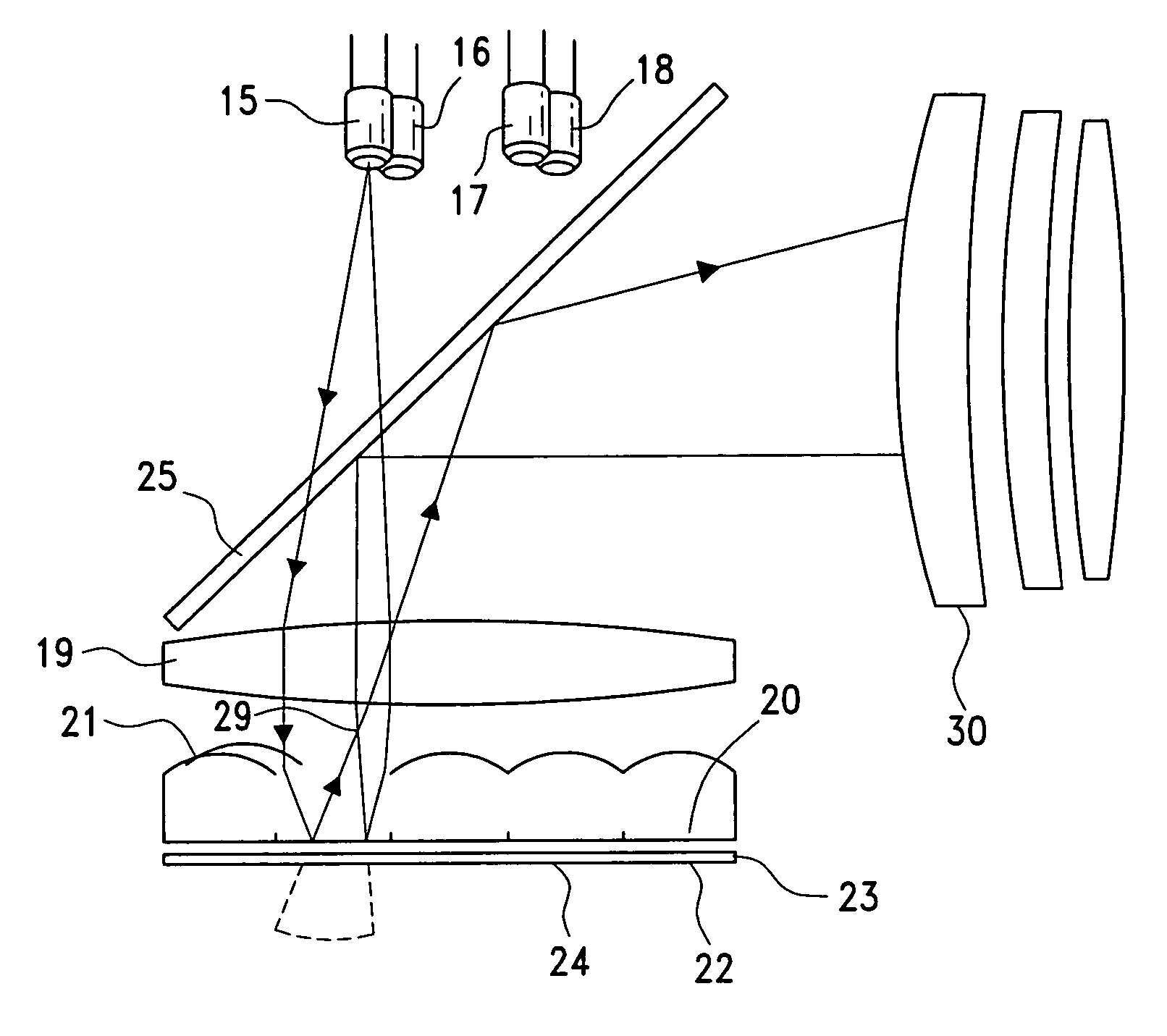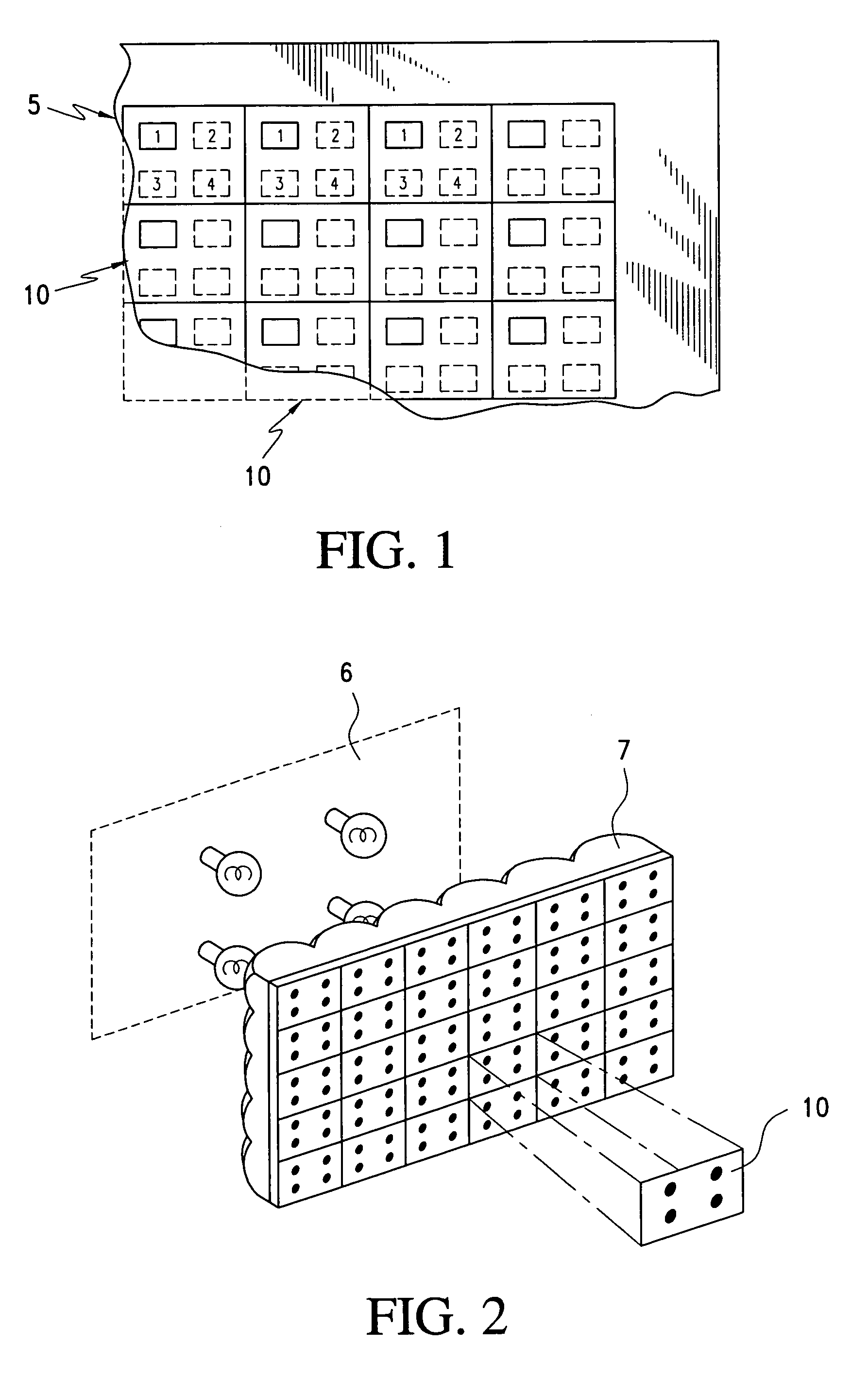Enhanced resolution for image generation
a resolution and image technology, applied in the field of display devices, can solve the problems of large volume, inability to adapt the optical and illumination systems of the aforementioned eichenlaub patents to such newer classes of light valves, and the proposed system requires four lcds
- Summary
- Abstract
- Description
- Claims
- Application Information
AI Technical Summary
Benefits of technology
Problems solved by technology
Method used
Image
Examples
Embodiment Construction
[0049]LCDs are unique in that they do not form images by emitting light. Rather, they act as light valves to vary the intensity of light passing through them in order to form an image. This light can be emitted by a backlighter behind the LCD, or can be ambient illumination reflected by a mirror behind the LCD. An effective method of increasing the resolution of a liquid crystal display involves changing the patterns of light emitting regions which sequentially illuminate subsections of each pixel. The basics of the operation of the system are described in U.S. Pat. No. 5,036,385, the disclosure of which is incorporated herein by reference.
[0050]Referring to FIGS. 1 and 2, light emitting regions 1, 2, 3, 4 are either situated a short distance behind the transmissive LC layer 5 of the display, or are projected onto the LC layer by appropriate optics. Although four regions are used in this example, in theory, any number can be used. Light emitting regions 1, 2, 3, 4 turn on and off in...
PUM
 Login to View More
Login to View More Abstract
Description
Claims
Application Information
 Login to View More
Login to View More - R&D
- Intellectual Property
- Life Sciences
- Materials
- Tech Scout
- Unparalleled Data Quality
- Higher Quality Content
- 60% Fewer Hallucinations
Browse by: Latest US Patents, China's latest patents, Technical Efficacy Thesaurus, Application Domain, Technology Topic, Popular Technical Reports.
© 2025 PatSnap. All rights reserved.Legal|Privacy policy|Modern Slavery Act Transparency Statement|Sitemap|About US| Contact US: help@patsnap.com



